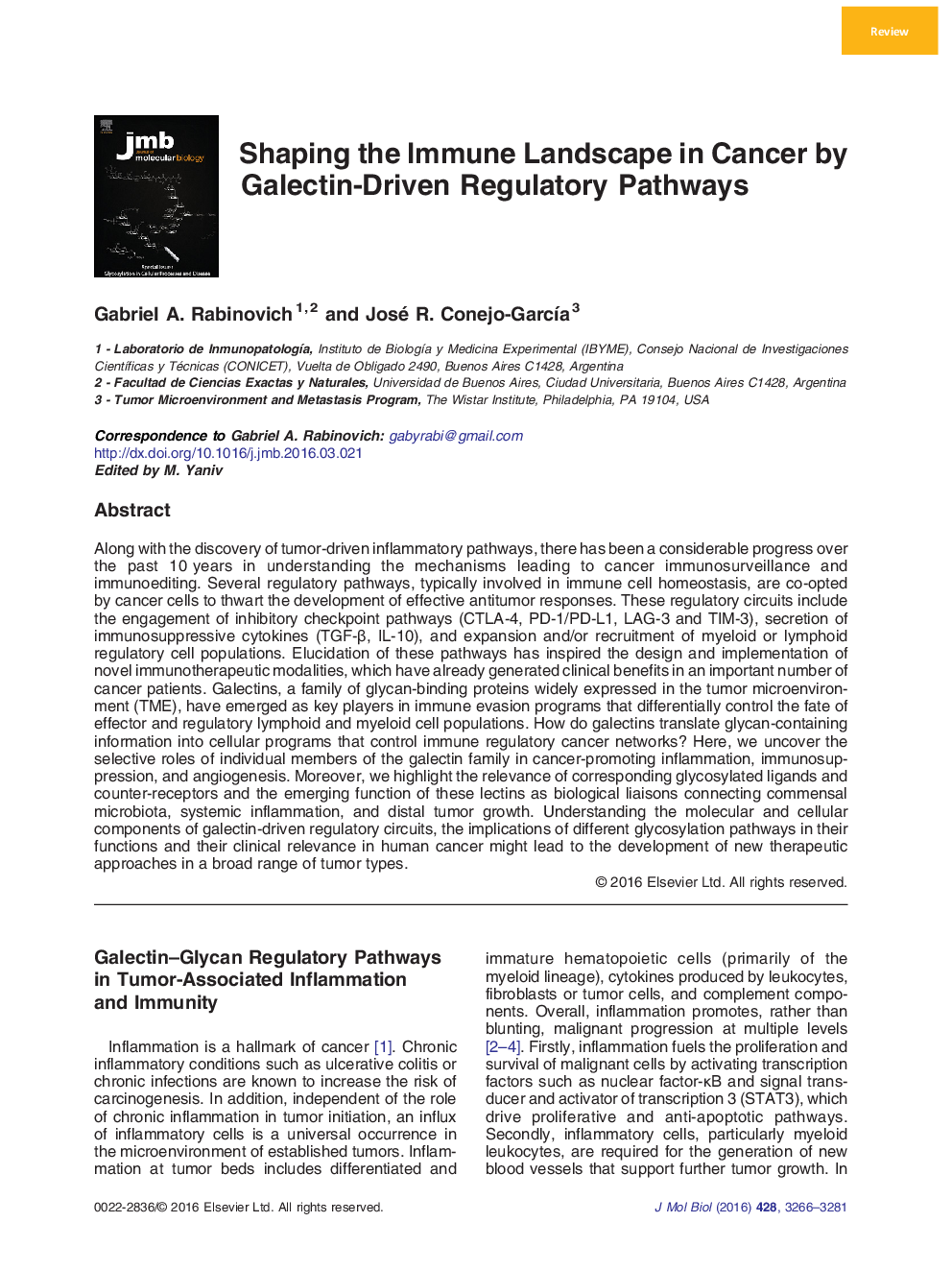| کد مقاله | کد نشریه | سال انتشار | مقاله انگلیسی | نسخه تمام متن |
|---|---|---|---|---|
| 2184252 | 1095815 | 2016 | 16 صفحه PDF | دانلود رایگان |
• Galectins are key players in immune evasion programs in cancer.
• Galectins–glycan interactions control immune and endothelial cell compartments.
• Galectin-1 links commensal microbiota, systemic inflammation, and tumor-immune escape.
• Targeting galectin–glycan interactions may contribute to unleashing antitumor immunity.
Along with the discovery of tumor-driven inflammatory pathways, there has been a considerable progress over the past 10 years in understanding the mechanisms leading to cancer immunosurveillance and immunoediting. Several regulatory pathways, typically involved in immune cell homeostasis, are co-opted by cancer cells to thwart the development of effective antitumor responses. These regulatory circuits include the engagement of inhibitory checkpoint pathways (CTLA-4, PD-1/PD-L1, LAG-3 and TIM-3), secretion of immunosuppressive cytokines (TGF-β, IL-10), and expansion and/or recruitment of myeloid or lymphoid regulatory cell populations. Elucidation of these pathways has inspired the design and implementation of novel immunotherapeutic modalities, which have already generated clinical benefits in an important number of cancer patients. Galectins, a family of glycan-binding proteins widely expressed in the tumor microenvironment (TME), have emerged as key players in immune evasion programs that differentially control the fate of effector and regulatory lymphoid and myeloid cell populations. How do galectins translate glycan-containing information into cellular programs that control immune regulatory cancer networks? Here, we uncover the selective roles of individual members of the galectin family in cancer-promoting inflammation, immunosuppression, and angiogenesis. Moreover, we highlight the relevance of corresponding glycosylated ligands and counter-receptors and the emerging function of these lectins as biological liaisons connecting commensal microbiota, systemic inflammation, and distal tumor growth. Understanding the molecular and cellular components of galectin-driven regulatory circuits, the implications of different glycosylation pathways in their functions and their clinical relevance in human cancer might lead to the development of new therapeutic approaches in a broad range of tumor types.
Graphical AbstractFigure optionsDownload high-quality image (178 K)Download as PowerPoint slide
Journal: Journal of Molecular Biology - Volume 428, Issue 16, 14 August 2016, Pages 3266–3281
